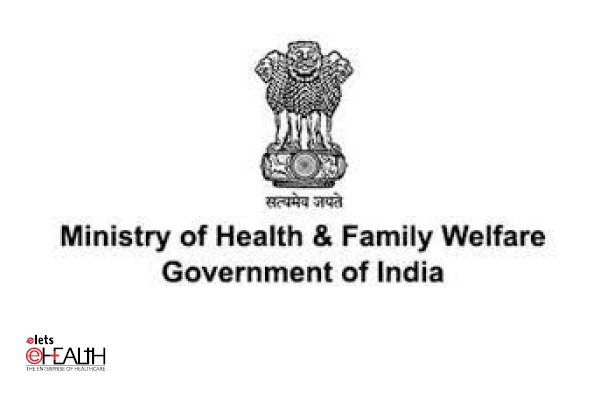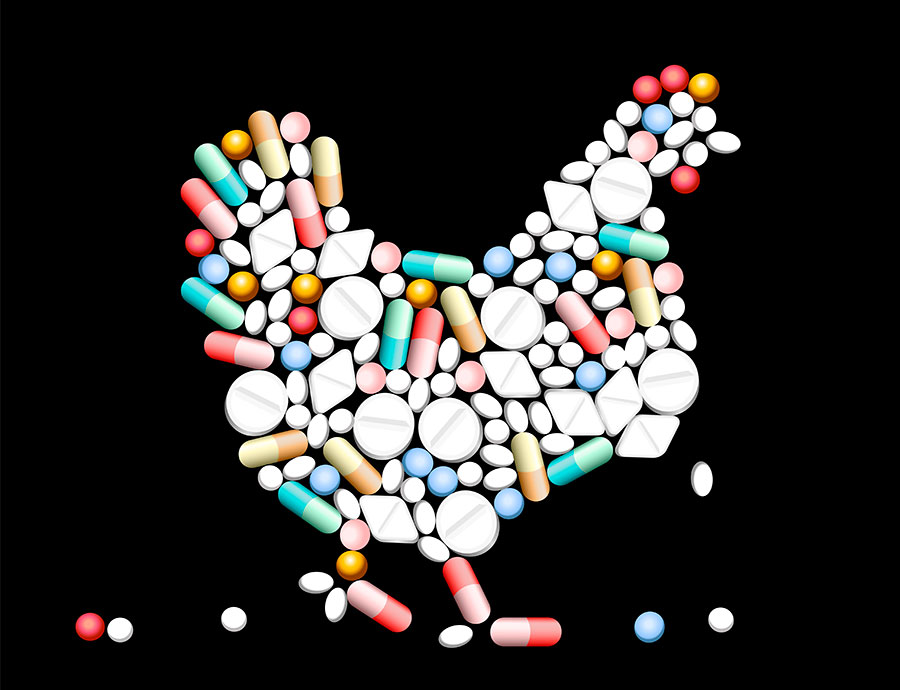
– Dr. Arnab Roy and Dr. Faisal Khan
Heart failure (HF) is multifactorial in etiology. Conservative estimates indicate the prence of heart failure in India due to various causes; to be around 1.3 to 4.6 million with an annual incidence of 491 600-1.8 million. In a recent publication (IJMR, 2010), the Indian Council of Medical Research expressed concern regarding the rising morbidity and mortality associated with heart failure and stated that the prence of heart failure increases with advancing age; ranging from less than 1 per cent in the 20-39 yr old age group to over 20 per cent in those aged 80 years or older. The life time risk of developing heart failure is estimated to be at around 20 per cent both in men and women. The lifetime risk of developing HF at the age of 40 yr is 11.4 per cent for men and 15.4 per cent for women. More than 500,000 new cases are diagnosed each year. Around 30 to 40 per cent of patients die from heart failure within 1 year after receiving the diagnosis. The Framingham Heart Study, a milestone clinical investigation in the domain of cardiovascular trials, estimated the prence of HF in men to be 8 per 1000 at age 50 to 59 years which exponentially increased to 66 per 1000 at ages 80 to 89 years; similar values (8 and 79 per 1000) were noted in women in the younger and older age groups respectively. Yes, the statistics speak volumes. Our elderly face a pronounced risk of heart failure and the demon threatens our youngsters too!! Time is ripe for us to look at ways and means to diagnose heart failure accurately, to stratify patients into high and low risk subgroups and to judiciously monitor the therapy of heart failure; not just based on subjective clinical judgement, but more quantitatively and tangibly.

The long legacy of biomarkers of heart failure

| Inflammation |
| C-reactive protein Tumor necrosis factor α Fas (APO-1) Interleukins 1, 6, and 18 |
| Oxidative stress |
| Oxidized low-density lipoproteins Myeloperoxidase Urinary biopyrrins Urinary and plasma isoprostanes Plasma malondialdehyde |
The use of biomarkers for prediction, diagnosis, prognosis and monitoring of cardiovascular disorders is an established routine in the practice of cardiology worldwide. Likewise a plethora of biomarkers have been employed in the management of heart failure as well. The legacy of biomarkers of heart diseases includes the older markers of inflammation and oxidative stress, remodelling markers, hormones which have been tested as surrogates of endothelial and myocardial injury; and the relatively newer direct markers of myocyte injury and stress like BNPs, ST2 and Galectin 3. Given above is a tabulated summary of biomarkers of heart diseases. vis-a-vis inflammation and oxidative stress.

The table above presents markers of remodelling, cardiac overload and myocardial injury which have a significant role to play in the management of heart failure.
How do biomarkers fit into the scheme of management of a heart failure case?
Broadly, heart failure cases can be divided into two categories; those with de novo heart failure and those who suffer heart failure as a sequel of myocardial infarction (MI). In the first scenario, when a patient presents to the Emergency Department with features of acute heart failure (fatigue, palpitation, severe breathlessness etc), it is the doctors priority to understand the cause of dyspnea and to rule out non cardiac causes. Once, a cardiac cause is established, with the help of biomarkers like natriuretic peptides, the clinician can arrive at a primary diagnosis of heart failure. Other markers like cardiac enzymes, remodelling markers, neurohormonal tests, basic blood work up and imaging may also be performed in conjunction. Once the final diagnosis is done, the clinician faces a need to stratify the heart failure case into high or low risk, inform the patients family of the probable prognosis, decide upon the aggressiveness of the anti HF regimen and then keep periodically monitoring the response to anti HF drugs. In the second scenario too, wherein heart failure sets in post myocardial infarction or when the clinicians efforts are directed towards preventing the occurrence of post MI heart failure; the clinician again requires clinical tools and methods to prognosticate the case, titrate doses of anti HF agents and for therapeutic monitoring thereafter. These are precisely the scenarios wherein the prognostic biomarkers of heart failure, employed successfully into clinical practice, come into play.
ST2: The frontrunner in the race of prognostic heart failure biomarkers
In the repertoire of biomarkers of heart failure, ST2 is among the most extensively researched markers. An unprecedented volume of clinical evidence favors the use of ST2 for prognosis, risk stratification, serial monitoring and therapy titration for patients with an established diagnosis of chronic heart failure, acute decompensated heart failure and as a predictor of heart failure post myocardial infarction. It is important to understand the placement of ST2 as a marker in the two categories of heart failure patients described earlier in this article; i.e., de novo and post MI heart failure cases. After the primary diagnosis of heart failure has been done in de novo cases, ST2 can be included in the lab work up for prognostication, risk stratification and serial therapeutic monitoring. For post MI patients who are already put onto anti HF medications in order to prevent heart failure, ST2 levels can be measured at pre defined time points during the course of therapy to check the effect of the anti HF regimen.
ST2: The physiologic basis
ST2 is a member of the interleukin-1 receptor family. It has a biological role in cardiac signaling pathway, which, under healthy conditions, serves to protect the heart during pressure overload or stretch. Two isoforms of ST2 are: ST2L (a membrane-bound receptor) and sST2 (a soluble form found in the bloodstream). In response to injury or mechanical tress, cardiac tissue produces and binds interleukin-33 (IL-33) to ST2L, stimulating a cardioprotective signaling cascade. When sST2 levels are elevated, it acts like a decoy and binds to IL-33, thus reducing its beneficial effect, so that cardiac fibrosis starts to develop. In this way elevated sST2 is a biomarker for worse prognosis in patients with CVD.
Natriuretic peptides and ST2: Allies and not rivals?
Natriuretic peptides are commonly employed in the initial and early work up of heart failure while a primary diagnosis at presentation has to be arrived at. NTproBNP results can help in ruling out noncardiac causes of breathlessness when a de novo case or a post MI case of suspected heart failure presents to the Emergency department. However, past clinical evidence has confirmed that serum concentrations of NT-proBNP, which are now widely used in clinical practice, depending on several factors such as age, sex, left ventricular hypertrophy, tachycardia, right ventricular overload, myocardial ischemia, hypoxemia, renal dysfunction, metabolic risk factors, liver cirrhosis, sepsis and infection. Therefore it is necessary to opt for an independent biomarker which can predict the risk of heart failure and provide a risk prediction value which is unaffected by all these factors
Clinical scenarios to better understand the precise utility of NT pro BNP and ST2
If the patient presents with clear cut symptoms of heart failure; history of dyspnea and CVD, evident acute breathlessness on presentation and fatigue; it would be ideal to measure the levels of NT proBNP.
On the other hand, if the clinician is looking for a monitoring and prognostic biomarker for established cases of acute/chronic heart failure and STEMI/NSTEMI; then ST2 presents an ideal option. This is because ST2 is an independent predictor of the clinical course that a patients disease might follow and the patient can thereby be managed accordingly. We have strong evidence base to support the fact that ST2 measurements can be repeatedly performed as part of serial monitoring in order to drive therapy decisions and clinical management.
The combination of ST2 and NT proBNP is a superior option than either of the biomarkers used alone
When ST2 testing is combined with that of NT proBNP, it gives a much better prediction of mortality in heart failure.
Combined testing for ST2 and NT pro BNP increases the efficacy as ST2 identifies high risk cases which are missed by NT pro BNP measurements. The patient is at a greater risk if either of the markers is elevated and the risk is highest when both markers are elevated.
Creating a clinical impact with ST2 testing: Serial therapeutic monitoring and guided dose titrations
For high risk patients, especially post MI, it is true that most cardiologists prefer to prescribe HF protecting agents or increase the doses of the ones ongoing. However, this extensive cover with anti HF drugs or an increase in the dose of anti HF medications is mostly based on the clinical assessment and clinical history of the patient and on routine lab investigations.
In this situation, performing an ST2 test prior to deciding anti HF drugs for a high risk case; provides the clinician with a clear idea of the patients current risk of heart failure.
Hence, anti HF drugs and their doses and the duration of therapy can be decided more objectively and tangibly, guided by an ST2 result; as opposed to simply prescribing a standard blanket cover of anti HF agents for all high risk patients. A specific ST2 level (35 ng/mL) has been established through a number of clinical trials. Heart failure patients who have ST2 values above this level are considered to be at high risk of suffering a recurrent heart failure or death. Not only that an incremental value of ST2 increases the risk of adverse events manifold. A high ST2 level warrants more aggressive high dose therapy whereas moderate to low ST2 level cases could be put onto less aggressive regimens.
In this context, we would also like to share with you hitherto unpublished data from SRLs clinical data pool. We looked at ST2 assays performed at SRL, during the initial launch phase of this test at our lab. A total of 453 ST2 samples were received and reported on a pan India basis by our lab, during this period. Of these, 57.61% showed elevated levels above the 35 ng/ml cut off whereas 42.38% were below this cut off value. We further analyzed the subgroup of samples that showed values above 35 ng/ml; with respect to patient demographics, mainly age and gender. Among those samples which showed values above the specified cut off; approximately 29% were patients below the age of 50 years whereas a whopping 71% were older patients aged 50 years or more. Likewise, the subgroup of samples with elevated ST2 levels comprised of 26% females and 74% males.
International Medical Endorsements
In the current era of fast paced and steady research, the biomarker space in diagnostics has got overcrowded. With several me-too biomarkers being researched and proposed, not even a handful of them actually make their way into regular clinical practice and from thereon into practice guidelines and recommendations. However, on accord of the robustness of the scientific evidence in favor of ST2 and its widespread acceptance in clinical practice; large medical bodies in cardiology and prominent regulators are acknowledging the benefit of use of this biomarker. This sets apart ST2 from the remaining lot of cardiac fibrosis biomarkers which are yet struggling to receive acceptance.
Quoting the stand put forth by the AHA/ACC 2013 Heart Failure Guidelines: Besides natriuretic peptides or troponins, multiple other biomarkers, including those reflecting inflammation, oxidative stress, neurohormonal disarray, and myocardial and matrix remodeling, have been widely examined for their prognostic value in HF. Biomarkers of myocardial fibrosis, soluble ST2 and galectin-3 are not only predictive of hospitalization and death in patients with HF but also additive to natriuretic peptide levels in their prognostic value.
Be a part of Elets Collaborative Initiatives. Join Us for Upcoming Events and explore business opportunities. Like us on Facebook , connect with us on LinkedIn and follow us on Twitter , Instagram.
"Exciting news! Elets technomedia is now on WhatsApp Channels Subscribe today by clicking the link and stay updated with the latest insights!" Click here!

















